The world of art has always been a reflection of human creativity and innovation. Throughout history, artists have used the tools and technologies available to them to create works that inspire, challenge, and provoke thought. In the digital age, technology has become an integral part of artistic expression, opening up new avenues for creativity and pushing the boundaries of what is possible in the world of art. In this article, we will explore the intersection of technology and art, focusing on the exciting realm of digital creativity.
- Digital Art Forms:
- Digital art encompasses a wide range of creative forms, including digital painting, 3D modeling, computer-generated imagery (CGI), digital photography, and interactive installations. These forms allow artists to experiment with new techniques and mediums.
- Digital Tools and Software:
- Artists now have access to a plethora of digital tools and software designed to aid their creative process. Software like Adobe Creative Suite, Blender, and digital drawing tablets have become essential for many artists.
- Virtual Reality (VR) and Augmented Reality (AR):
- VR and AR technologies are pushing the boundaries of interactive art. Artists can create immersive experiences that blend the digital and physical worlds, allowing viewers to interact with and become a part of the artwork.
- Generative Art:
- Generative art uses algorithms and computer code to create artwork. Artists write code that generates images, animations, and even music. This form of art blurs the line between the artist and the machine.
- Digital Sculpture and 3D Printing:
- Artists are using 3D modeling software and 3D printers to create physical sculptures based on their digital designs. This technology enables intricate and complex forms that were previously challenging to achieve.
- Artificial Intelligence (AI) in Art:
- AI is being used to create art in novel ways. AI algorithms can generate artworks based on a dataset of existing art, creating new and often provocative pieces. Artists are also collaborating with AI to produce unique works.
- Blockchain and Digital Ownership:
- Blockchain technology is being used to establish ownership and provenance in the digital art world. Non-fungible tokens (NFTs) are a prime example, allowing artists to sell unique digital assets and retain control over their work.
- Digital Art Galleries and Online Exhibitions:
- The internet has given rise to digital art galleries and online exhibitions. Artists can reach global audiences without the need for physical spaces, democratizing art access.
- Art Preservation and Conservation:
- Technology is also being employed to preserve and restore artworks. High-resolution digital scans and 3D modeling help in the restoration of damaged or deteriorating pieces.
- Art and Social Commentary:
- Digital artists often use their work to comment on contemporary social, political, and environmental issues. The digital medium allows for rapid response and dissemination of these messages.
- Collaboration and Globalization:
- Digital tools enable artists to collaborate across geographic boundaries. Artists from different parts of the world can work together on joint projects, fostering cultural exchange and diversity in artistic expression.
Digital creativity is reshaping the art world in profound ways. It has democratized art, allowing more people to engage with and create art. The fusion of technology and art continues to inspire and challenge both artists and audiences, pushing the boundaries of what is possible in the realm of creativity. As technology evolves, so too will the world of digital art, offering new opportunities for artists to express themselves and connect with the world. It’s an exciting intersection that promises to redefine our understanding of art in the 21st century.
